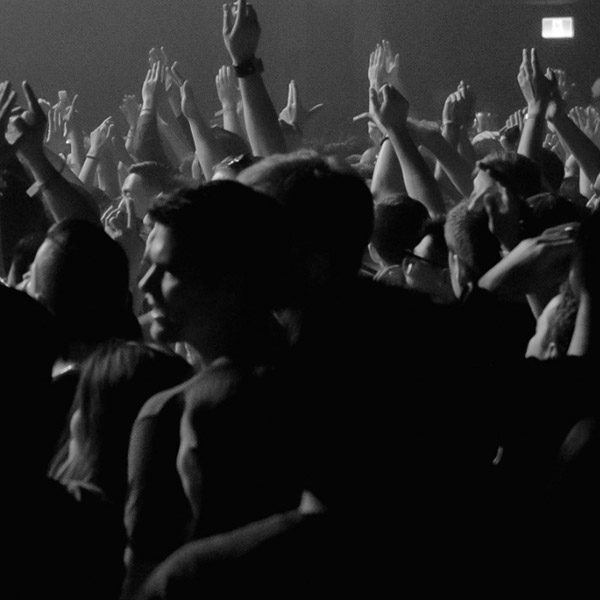‘Black Mirror’ season seven post-watch guide: trivia, set secrets and more

Black Mirror is back. Which means it’s time to get out your proverbial deerstalker and magnifying glass and go all Sherlock Holmes to uncover some of the intricacies of season seven’s six episodes. There are Easter eggs aplenty, of course, from opening episode ‘Common People’ to the blockbusting finale ‘USS Callister: Into Infinity.’ To help us crack open the surprises for this post-watch special, NME spoke to Black Mirror creator Charlie Brooker and executive producer Jessica Rhoades, as well as cast members Emma Corrin, Rosy McEwen, Siena Kelly, Lewis Gribben and Josh Finan. Needless to say, spoilers lie ahead. Make sure you’ve watched all episodes before you dive in.

Episode one – ‘Common People’
Logline: “When a medical emergency leaves schoolteacher Amanda fighting for her life, her desperate husband Mike signs her up for Rivermind, a high-tech system that will keep her alive – but at a cost…”
The title is a Pulp reference
Sometimes, the best ones are the obvious ones. The choice of ‘Common People’ for the opening episode’s title is, Brooker confirms, inspired by the seminal Pulp track. And if you think about it, it perfectly fits the episode’s Ordinary Joes, Chris O’Dowd’s construction worker Mike and Rashida Jones’ teacher Amanda. Time to sing along with the common people… it might just get you through.
It’s all in the Dit-ails
If there’s one thing Black Mirror loves more than a fake brand or company name, then it’s dropping it across the series. The Netflix-like Streamberry, of course, is a familiar one. But now we have food manufacturer Ditta. In this first episode, Rashida Jones’ Amanda recites an advert for “Honey Nugs”, a delicious-sounding honey-coated cereal coated made by – you guessed it – Ditta. The company reappears more significantly in episode two, ‘Bête Noire’, as the company that Maria and Verity work for. While Brooker admits that re-using a fictional company name saves clearing copyright more than once, he gets a kick out of sprinkling them across episodes: “It’s fun to put those Easter eggs throughout.” For the eagle-eyed among you, season seven even has a running gag. “We’ve got one prop that’s in every single episode this season,” Brooker reveals. Answers on a postcard, as they say…

Episode two – ‘Bête Noire’
Logline: “Confectionary whizz kid Maria is unnerved when her former schoolmate Verity joins the company she works at — because there’s something altogether odd about Verity, something only Maria seems to notice…”
Amyl And The Sniffers soundtracked this episode
When Maria breaks into Verity’s house, Aussie punks Amyl And The Sniffers’ raucous track, ‘Starfire 500’, from their eponymous 2019 debut album, crashes across the scene, with Verity listening to it. “Actually, early on in the cut, there was an Amyl And The Sniffers song right at the start,” Brooker reveals. “We had a little montage, which we ended up removing.” Brooker kept the band in the episode, however, for the break-in scene. “We wanted Verity to be listening to some angry music. And also it felt quite important to have a female vocal.”
Strangely, Brooker bumped into the band’s lead singer Amy Taylor at a showbiz party held at Poker Face star Natasha Lyonne’s house. “I was walking and I tripped down the stairs and made [myself] look like an absolute dick. And she went, ‘Alright mate!’ She saw me fall over and she said, ‘Oh Hi, I’m Amy.’ And I said, ‘We’ve just used one of your [tracks].’ And she knew, because they’d obviously got the clearance request. So that’s as glamorous as I get. But I was tripping up and making myself look like an absolute loser at the time.”
Verity’s necklace holds the key
The big reveal in episode two comes as we realise Verity has built a gizmo to conjure alternate realities and control other people’s perceptions, which she operates simply by touching her necklace. Watch closely and you’ll see actress Rosy McEwen surreptitiously fingering the aforementioned pendant throughout the episode. “The necklace was a funny one,” says McEwen, “because I was always like, ‘Am I doing it too much?’ But everyone was like, ‘More! More necklace!’ Because actually, when you’re watching it, of course, you don’t think, ‘Why is she holding her necklace?’ Of course, you don’t think it. It’s only on a second watch that you’re like ‘Oh!’ So that was something… how do you do that in a way that feels really natural, like a sort of second-hand thing?”
The ending was originally more risqué
At times, the actors are encouraged to improvise on Black Mirror, as was the case in the final segments of ‘Bête Noire’ when Maria kills Verity and takes possession of her reality-shifting device. Suddenly, she’s seen as a tyrannical empress. To get Siena Kelly into character, the episode’s director Toby Haynes told her to imagine she’s at Glastonbury, screaming at the top of her lungs. Recalls Kelly of the moment: “I just yell, ‘Who wants to suck my dick?’” And then the episode ended. That was cut for elegance.” What a shame.

Episode three – ‘Hotel Reverie’
Logline: “A high-tech, unusually immersive remake of a vintage British film sends Hollywood A-list star Brandy Friday into another dimension, where she must stick to the script if she ever wants to make it home.”
Movement, or lack of it, was crucial
For a story that sees futuristic tech used to plant an actor into a simulated version of a movie, creating those scenes for real required a more old-school approach. When Issa Rae’s Brandy enters ‘Hotel Reverie’, she finds her co-stars stock still until the credits roll. The background actors were all required to be motionless for this moment. Movement coach/choreographer Polly Bennett, who previously worked with Corrin on Deadpool & Wolverine, was also on hand to help with the scene.
“A lot of the supporting background artists were also dancers,” reveals Emma Corrin, who plays Dorothy, the leading character in ‘Hotel Reverie’. “So they had that incredible ability to hold completely still.” With everyone playing statues, the take could last up to four minutes, “which was unbelievable”, adds Corrin. “Especially when me and Issa are running around them and moving them and stuff.”
Old-fashioned techniques were used to echo the Golden Age of Hollywood
With Keyworth Pictures’ ‘Hotel Reverie’ alluding to classic movies like Casablanca, the references aren’t just in the storyline. There was to be no location shooting here, but instead the scenes set inside the black-and-white ‘Hotel Reverie’ film itself were all shot on a soundstage, echoing the production methodology used back in 1940s and ’50s Hollywood. “They built the set,” reveals Corrin. “And the backgrounds that you see Dorothy interact with when she’s going through this whole identity crisis… they’re all hand-painted. It’s extraordinary, beautiful.”
It isn’t a take-down of AI
Ever since actors went on strike in 2023, the threat of AI has loomed over Hollywood. Back then, as now, concerns surrounded the fact studios might use actors’ likenesses via increasingly sophisticated AI technology, making performers redundant. “AI scares me and I don’t really understand it,” admits Corrin. “I don’t use it. I don’t think I would. I think I’d feel like I was betraying myself and the industry.”
Nevertheless, she doesn’t feel that ‘Hotel Reverie’ is a direct hit-job on AI. “I feel like ours was one of those episodes where the AI is interesting. There’s a bit of ambivalence around it in this episode, right? It’s not particularly ‘yay’ or ‘nay’. It’s used as this tool to create this fantasy in which this love story can shine through.”

Episode four – ‘Plaything’
Logline: “In a near-future London, an eccentric murder suspect is linked to an unusual video game from the 1990s – a game populated by cute, evolving artificial lifeforms.”
This episode is full of nuggets
‘Plaything’ is an immediate call back to ‘Bandersnatch’, Black Mirror’s famed interactive episode. Once again, we’re back at software company Tuckersoft, run by Asim Chaudhry’s Mohan Thakur and featuring top coder Colin Ritman (Will Poulter).
“There are little Easter eggs everywhere. Like on our set in Lewis’ character’s room, there are references. There was a video cassette of [season six episode] ‘Demon 79’,” says Josh Finan, who plays Lump, the wastrel who descends upon young video game reviewer Cameron Walker (Lewis Gribben). Also pinned to walls, according to Gribben, were posters for ‘Bandersnatch 2’, a fake follow-up to the game featuring in the ‘Bandersnatch’ episode, and ‘Metalhead’, a nod to the fifth episode of season four, set in a collapsed society overrun by highly dangerous robotic dogs. A “knock-off” ‘USS Callister’ one-sheet also features.
Cameron Walker is not – repeat not – Charlie Brooker
Long before Black Mirror, Charlie Brooker was a video game journalist in the 1990s, reviewing for PC Zone. But that doesn’t mean he based the unhinged Cameron Walker on himself. Especially when the rookie games journo becomes hooked on both Ritman’s game ‘Thronglets’ and LSD and fails to hand his copy in. “I wasn’t doing acid in the ’90s. I mean, I maybe did it once, but I wouldn’t recommend it. I was always on time. I don’t think I ever missed a deadline. Maybe once. I was very prompt with my work. So there.”
The ending is open to interpretation
In the finale, the older Cameron (Peter Capaldi) orchestrates a global meltdown, allowing the all-powerful, ever-evolving Throng to access the world’s devices. But did it wipe out civilisation? “It didn’t kill people, but I think it took away their ability to think,” says Gribben. “The Throng acts through Cameron… he has enslaved everyone to lose their inhibition and violent thoughts. So in a way everyone’s peaceful, but they’re forced to be peaceful, and they’re just mindless zombies at this point. It’s like a forced regime of peace. That’s how I interpret the end. We’d all be just dumb and going around with no eyes.” It also looks a lot like the video for Radiohead’s ‘Just’.

Episode five – ‘Eulogy’
Logline: “An isolated man is introduced to a groundbreaking system that allows its users to literally step inside old photographs — stirring powerful emotions in the process.”
Peter Jackson’s Beatles doc was an influence
Surprisingly, ‘Eulogy’ took its inspiration from Get Back, Peter Jackson’s mighty Beatles marathon that pieced together behind-the-scenes footage of the Fab Four recording their final album, ‘Let It Be’. In particular, the way the New Zealand filmmaker used machine-assisted learning to aid audio restoration, isolating instruments, vocals and conversations into individual tracks.
“Peter Jackson and his team are using cutting edge technology, an AI-based machine learning stuff to bring the past back to life in a very sort of evocative way,” says Brooker. “And I found that fascinating. And, of course, that’s all about music and so I think that those things were reverberating around in my head.”
‘Fools Gold’ isn’t there to fool us
When Philip recounts his days hanging out with first love Carol, the scene is accompanied by another classic Black Mirror needle drop. The Stone Roses’ 1989 track ‘Fools Gold’ is heard at one of the parties they attended when they were young. But, according to Brooker, choosing ‘Fools Gold’ was never meant as a sly comment on their soon-to-be crumbling relationship. Rather, it was simply a perfect way to spirit audiences back to the early ’90s.
“I think, partly, that this is my era,” says Brooker. “I remember, that was a track that everyone was listening to at a particular point in time. Everyone’s got a piece of music they listen to that’s evocative. And obviously music being evocative of memory is very important in that episode throughout, and so it’s really chosen for that reason… it’s just a sort of very distinctive and evocative piece of music and just a really good track.”
And, before you say it, Brooker and co. gave thought to the fact this defiantly British song would be played in America at that time. “He [Philip] actually explains it by sort of saying that there’s a British girl there [at the party].”

Episode six – ‘USS Callister: Into Infinity’
Logline: “Robert Daly is dead, but now the crew of the USS Callister – led by Captain Nanette Cole – are stranded in an infinite virtual universe, fighting for survival against 30 million players.”
The crossovers continue into infinity and beyond
It’s Black Mirror’s first ever sequel, following on directly from ‘USS Callister’, the Emmy-winning first episode of season four. While this means the return of Jesse Plemons and the others, Brooker drops in a beautiful moment when actors Paapa Essiedu and Anjana Vasan appear momentarily as pilots in the climactic final dogfight. The two, of course, played Gaap and Nida from ‘Demon 79’, the final episode of season six – but are they meant to be their characters from that episode, Gaap and Nida?
“I like to think that they are them,” says Brooker. “It’s weird, isn’t it? Because at the end of Demon 79 – spoiler – the world is completely destroyed. So I don’t know what that does to the overall continuity. Probably fucks it through a bin bag, doesn’t it?”
Or does it? In Black Mirror, distinct worlds are more often than not bound together. “I like to think that the episodes are interconnected via a sort of dream logic, in a way,” says Brooker. “So it’s fun when you sometimes see people trying to actually work out a proper chronology. That looks to me like quite a task.”
The post ‘Black Mirror’ season seven post-watch guide: trivia, set secrets and more appeared first on NME.
James Mottram
NME






